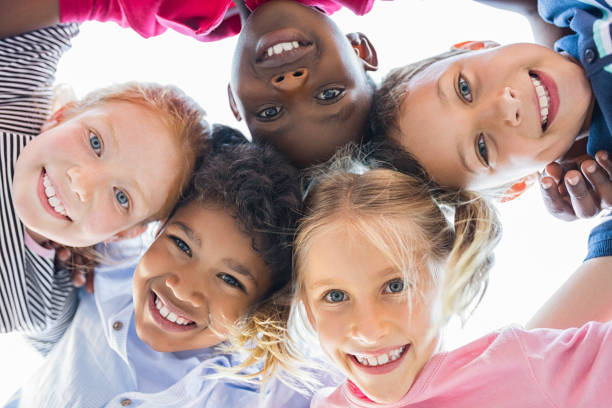Understanding Adoption and Attachment:
What You Need to Know
Adoption is a complex process that can be both exciting and challenging. As a parent or family considering adoption, it’s important to understand the effects adoption and attachment can have on children. This article will discuss what you need to know about adoption and attachment in order to make an informed decision. We’ll look at the impact of pre- and post-adoption experiences on attachment, the importance of bonding with your adopted child, and the importance of providing a safe and secure home environment. By understanding these topics, you can ensure that your adopted child is able to build a healthy relationship with you and your family.
Definition of Adoption and Attachment
When talking about understanding adoption and attachment, it is important to first understand what adoption and attachment mean. Adoption is the legal process through which a person or couple becomes the legal parents of a child who is not their own biological child. Attachment is the strong emotional bond that forms between a child and their primary caregiver, usually the parent. This attachment serves to create a secure base from which a child can explore the world, feel safe and protected, and establish trust in relationships.
Attachment begins to form during infancy and develops over time, with healthy attachments leading to positive outcomes such as trust, resilience, and secure relationships in adulthood. In contrast, unhealthy attachments can lead to difficulties with trusting, managing emotions and forming close relationships. Therefore, understanding and fostering healthy attachment is key to ensuring that children are able to develop into well-adjusted adults.
What Are The Different Types of Attachments
When it comes to understanding adoption and attachment, it’s important to understand the different types of attachment. Attachment can be broadly divided into two main categories: secure attachment and insecure attachment. Secure attachment is the preferred type of attachment and involves a strong bond between a child and their caregiver. This type of bond allows a child to feel safe and secure in the presence of their caregiver and to express their emotions freely.
In contrast, insecure attachment occurs when a child does not feel connected to their caregiver or has difficulty forming trusting relationships. Insecure attachment can lead to a number of issues, such as difficulty regulating emotions and forming trusting relationships with peers. Insecure attachment can also have long-term impacts on a child’s development, such as increased anxiety and depression.
The different types of attachment can also be broken down further into four distinct types: secure-avoidant, secure-ambivalent, insecure-avoidant, and insecure-disorganized. Secure-avoidant attachment occurs when a child feels that their needs are best met independently and they tend to avoid contact with their caregivers. Secure-ambivalent attachment occurs when a child expresses both clinginess and avoidance toward their caregivers. Insecure-avoidant attachment occurs when a child tends to ignore their caregiver and not respond to them when they need help. Finally, insecure-disorganized attachment occurs when a child is confused or anxious around their caregiver and exhibits unpredictable behaviors.
Understanding the different types of attachment is key to understanding adoption and attachment, as it can help adoptive parents identify any potential issues that their child may be having with forming attachments. It is also important to remember that all children are different and may express various forms of attachment depending on the situation.
The Impact of Attachment on Development
Understanding adoption and attachment is essential for understanding the impact attachment has on a child’s development. Attachment relationships influence the way children view and interact with the world around them. The degree of attachment between a child and their primary caregiver or adoptive parent plays a key role in shaping their behavior and psychological well-being.
Research shows that children who form secure attachments with their parents tend to have better social and emotional functioning, higher self-esteem, and better problem-solving skills. In contrast, those with insecure or disrupted attachment relationships may experience greater difficulties in trusting others and forming healthy relationships, as well as delayed or impaired cognitive and emotional development.
For example, when a child has an insecure attachment, they may be more vulnerable to anxiety, depression, aggression, and other behavioral issues. They may also find it difficult to trust and rely on others, leading to difficulty in developing meaningful relationships in the future. In addition, they may have difficulty regulating their emotions and feelings, which can lead to difficulty managing stress and regulating their behavior.
The quality of the attachment relationship has far-reaching implications for a child’s development, so it is important to prioritize fostering positive attachments in order to promote healthy development.
The Importance of a Positive Attachment
The bond between a parent and child is one of the most powerful connections in life. Understanding adoption and attachment is essential in fostering a positive connection. A positive attachment allows children to develop a secure base from which they can explore their world. It also helps them to become more resilient when facing challenges, and to be better able to regulate emotions.
Children who have a secure attachment to their parents have been found to have better academic success, better social skills, and increased self-confidence. In addition, a secure attachment relationship can help to build trust, form lasting relationships, and provide a basis for healthy communication.
Parents who understand adoption and attachment can develop a stronger bond with their children by being consistent, loving, and responsive. This can create a safe environment for the child to express feelings and needs without fear of rejection or criticism. Parents can also create opportunities for bonding by participating in activities together such as reading stories, going for walks, and engaging in meaningful conversations.
By creating a secure bond between parent and child, understanding adoption and attachment can help children to feel more secure in their relationships with others and more confident in their ability to handle life’s challenges. It can also encourage children to explore their world with curiosity and joy. Therefore, it is important that parents understand adoption and attachment and strive to create a strong, positive connection with their children.
How to foster a Positive Attachment
Understanding adoption and attachment is a critical part of being a successful parent or caregiver. There are many ways to foster a positive attachment between the adopted child and their family or caregiver, allowing for healthier development.
First, be aware of your child’s individual needs. Recognizing that your adopted child may have different needs than other children, as well as understanding how their past experiences may shape their reactions to certain situations, can help you adjust your approach in order to better meet those needs.
Second, create an atmosphere of safety and security. Show your child they can trust you by offering them consistent care and attention, responding promptly to their needs, and allowing them to express themselves without judgment. Make sure they feel safe enough to explore the world around them without fear.
Third, build a strong connection through physical contact. You can provide warmth and comfort through physical touches such as hugs, snuggles, and gentle caresses. Physical touch is also important for calming a child down when they’re feeling overwhelmed or upset.
Fourth, ensure that the relationship is mutual. Be attentive to your child’s interests, thoughts, and feelings, and offer reciprocal support. When they reach out to you, respond with love and interest. This will help build your bond and establish trust.
Finally, stay committed to the process. It may take some time for a child who has been adopted to form a secure attachment with their new family or caregiver. Showing patience and consistency throughout the process will help strengthen the bond between you.
By understanding adoption and attachment, you can foster a positive relationship with your adopted child that will last a lifetime.
Conclusion
Understanding adoption and attachment is an important part of parenting. The type of attachment that develops between parent and child has a significant impact on the child’s development, so it is essential to foster a positive attachment. By understanding different types of attachment, how they are formed, and the importance of a positive connection, parents can ensure their children have the best chance for a successful future. With this knowledge, parents can provide the love and support necessary for their children to thrive and form strong relationships with those around them.






